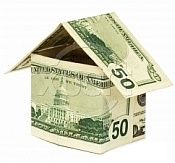A Welcome Global Move To Ease Credit
 News of a global effort to ease the credit crunch is welcome, indeed, and far superior to the President's dangerous, unfair and inequitable proposed solution to the mortgage meltdown.
News of a global effort to ease the credit crunch is welcome, indeed, and far superior to the President's dangerous, unfair and inequitable proposed solution to the mortgage meltdown.Over the last couple days, I have spent hours with the leaders of Southern California's home building industry. (Although I can hardly drive a nail, I guess I'm a leader of the industry as well, as I serve as public affairs VP for the industry's So Cal trade association, the largest and most watched in the nation.)
To a person, they are pessimistic for the short term and ebullient for the long term -- from perhaps 2010 on. All of them predicted a downturn and were preparing for it, but none anticipated the precipitous drop created not by a lack of demand but by a lack of credit.
How precipitous? Last year, new home sales and remodels in So Cal had a value of $17.9 billion; this year, it will be $5.5 billion less, according to the Construction Industry Research Bureau.
Adversaries in the no growth movement (the Greenies, Warmies and NIMBYs) may be desirous of a crumbling economy, or they may be ignorant, but if they are celebrating housing's stumble, they should know the price: The So Cal economy took a $12 billion hit in 2007 because of the drop.
Since the market adjustment started in 2004, SoCal's economy has lost $38 billion in economic activity that were lost as the value of new homes, remodels and new business activity created by them shrunk, according to CIRB.
This is the largest new home market in the country, but numbers of such a scale are cropping up in nearly every market across the country. As goes housing, so goes America's economy.
That's why this news from WSJ is so encouraging:
The Federal Reserve has joined with four other major central banks to announce a series of measures designed to inject added cash into global money markets in hopes of thawing a credit freeze that threatens their economies.Because home sales today are not so much for homes, but for deals, stabilization is the first step toward recovery. As long as buyers remain reticent to close a deal because they think tomorrow will bring a better deal, sales will continue to drop.
The Fed said today it would create a new "term auction facility" under which it would lend at least $40 billion and potentially far more, in four separate auctions starting this week. The loans would be at rates far below the rate charged on direct loans from the Fed to banks from its so-called "discount window." But the new loans can still be secured by the same, broad variety of collateral available that banks pledge for discount window loans.
The European Central Bank, Bank of England, Bank of Canada and Swiss National Bank simultaneously announced parallel measures.
Stock futures soared Wednesday on the news, a day after the Fed's rate moves disappointed the market.
The Fed also said it had created reciprocal "swap" lines with the European Central Bank, for $20 billion, and the Swiss National Bank, for $4 billion. These will enable the ECB and SNB to make dollar loans to banks in their jurisdiction, in hopes of putting downward pressure on interbank dollar rates in the offshore markets, principally the London Interbank Offered Rate, or Libor, market. The inability of foreign central banks to inject funds in anything other than their own currency has been a factor creating the squeeze on bank funding in those markets.
The Fed's move, by freeing much-needed new sources of credit, can bring new buyers into the market, and builders were working to diminish their standing inventory over the last couple of years, it won't take too many sales before supply and demand achieve equilibrium.
With all the expected disclaimer, investors might want to start looking for deals in homebuilder stocks. There are risks of bankruptcies in the short term, of course, but the companies that make it through should begin appreciating quite robustly in a few years, thanks to moves like the Fed's today.
Labels: Economic Policy, Fed, Housing Market




<< Home